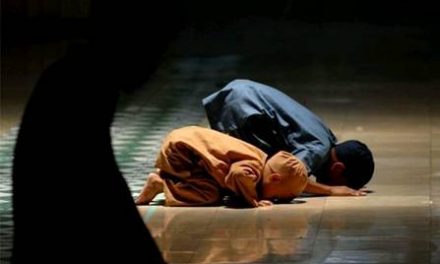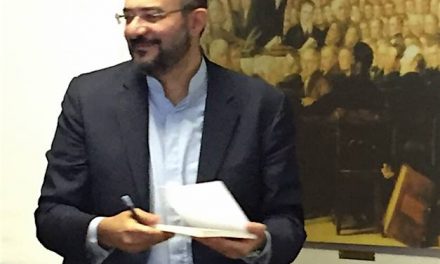How old was Aisha when she married the Prophet (s)?
My estimate of Aisha’s age when she married the Prophet, peace be upon him, in the first year of the Hijri Calendar, is 19, not 9 as some scholars claimed. This article is a brief outline of my argument.
A non-authentic narration, which was unfortunately included in the authentic collections (Bukhari No. 3894 and Muslim No. 1422), indicated that the Prophet peace be upon him consummated his marriage to Aisha when she was “nine years old.” There is no difference of opinions over the fact that this marriage took place in Medina in the first year after Hijra. However, there are other authentic narrations, also in the same Bukhari and Muslim authentic collections, which logically contradict the “nine years old” narration.
For example, Bukhari’s narration (No. 2724) that Aisha participated with the Muslim army in the Battle of Uhud (in Year 2 Hijri) means that she was supposedly 10 years old during that battle. This is logically impossible, given her role in battle that was narrated in the hadith. This narration also contradicts with numerous other narrations in which the Prophet never allowed children under 15 to witness battles.
Bukhari himself also narrates (No. 2176) that Aisha witnessed her father’s attempt to migrate to Abyssinia, which was during the Year 4 of the Message (Year 9 Before Hijra) according to all accounts. This witnessing could not have happened before Aisha herself was born, as the “nine years old” hadith implies!
Bukhari himself also narrates (No. 4595) that Aisha witnessed the revelation of Surat Al-Qamar (Chapter 54) while she was a “jariyah” (an Arabic term for a girl between 6 and 13) “playing in Mecca.” Chapter 54 was revealed somewhere between the Years 2 and 4 of the Message (i.e., between Years 11 and 9 Before Hijra), according to all other accounts. This means that in the first year after Hijra, her age must have been somewhere between 15 and 24, according to the simple mathematical logic of these Bukhari narrations themselves.
Other narrations, by Ibn Is-haq this time, show that Aisha was the “19th person to embrace Islam” in the first year of the message (i.e., 13 Before Hijra), and that she was a “young girl” at that time (Ibn Hisham, 271). Ibn Ishaaq was rendered “trustworthy” by many, including Imams: Sufian Al-Thawri, Al-Zuhri, Shu’ba, Al-Shafie, Ali Ibn Al-Madini, and other prominent scholars. It is true that Imam Malik and Hisham Ibn Urwa accused Ibn Ishaaq of lying, but many other scholars disagreed, especially that Malik never met Ibn Ishaaq himself.
In fact, it is Hisham Ibn Urwa, whom I think is the source of the error in the “nine years old” narrations. He was accused of lying (tadlees) by a number of scholars, including Malik Ibn Anas and Ibn Hajar, and of having developed Amnesia later in his life by other scholars, including Yahya Ibn Saeed and Ibn Khirash. His conduct with the Ummayyad kings of his time also shows lack of integrity and honesty.[1]
To me, Hisham Ibn Urwa’s serious problem is his narration about the Prophet being a victim of some magic spell (hadith sihr al-rasul). Hisham is the source of the claim that the Prophet, peace be upon him, fell under some magic spell that was made by an unknown Jewish young man from Medina by the name Labid Ibn A’sam (Bukhari No. 4530). Hisham claimed that to the Prophet, peace be upon him, spent some time, “imagining that he did things that he never did,” etc. This narration by Hisham contradicts with many Quranic principles, including Allah’s promise to “protect the Prophet from people” (5:67), and the Quran’s repeated rejection of claims from the pagans of Mecca that the Prophet, peace be upon him, was under a magical spell (refer to: 17:47, 17:101, and 25:8). This narration alone, to me, makes Hisham non-trustworthy, despite the greatness of his father Urwah Ibn Al-Zubair, who was one of the seven most prominent Jurists of Medina, and his grandfather Al-Zubair Ibn Al-Awwam, a prominent companion of the Prophet, peace be upon him.
We also have the other authentic narrations that Aisha was briefly “engaged” to Jubair Ibn Mut’am Ibn ‘Adiyy (Ahmad’s Collection, No. 25810), before she married the Prophet, peace be upon him, an engagement that could not have happened logically before the age of 6, as Hisham’s narration implies! And there is another historical fact that Aisha was ten years younger than her sister Asmaa Bint Abu Bakr, and Asmaa was 17 (or otherwise 27 according to other narrations) in the first year of the message when she embraced Islam. This puts Aisha’s age around 7 in the first year of the Message (13 Before Hijra). Therefore Aisha was at least 19 when she married the Prophet, peace be upon him.
Finally, when we have such contradictions in narrations transferred by “trustworthy” narrators, we must apply the method of critiquing the content (naqd al-matn). This means that the Prophet’s marrying Aisha at the age of 19 is more likely to have happened than marrying a girl literally in her childhood (at the age of 6, 7 or 9, narrations differ). This critique has a specific significance because the narrations related to this marriage have been cited in fatwa about marriage age in Islam. The fatwa that allowed the marriage of children at the age of 9 has caused the demise of numerous poor girls in our time and before. I have to add that my view is not based on a bias to any particular western or eastern “culture,” legal or social, but is purely based on the understanding (dirayah) of the narrations and the rules of fiqh of marriage in Islam and its higher objectives (maqasid). If marriage is about achieving the objectives of “mutual love and mercy,” as the Quran asserts (30:21), how can marrying a 6- or 9-year-old girl achieve mutual love and mercy?
The same higher objectives of the Shariah and holistic understanding of the Sunnah narrations are essential for us to be able to answer the remaining questions in this book, prime of which is the next question: If this is the status of women in the Prophet’s mosque, on what basis do some Muslims prevent women from the mosque?
[1] Refer, for example, to Al-Zahabi for a detailed biography. Muhammad Al-Zahabi, Siyar A’laam al-Nubalaa, Al-Risalah, Beirut, 2001, 6/34-47.






